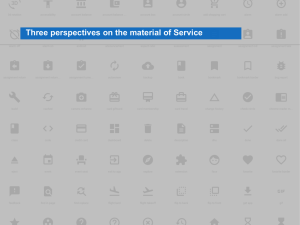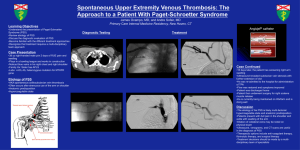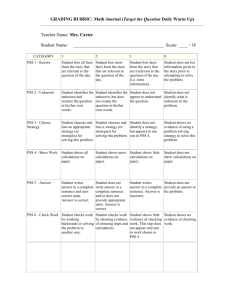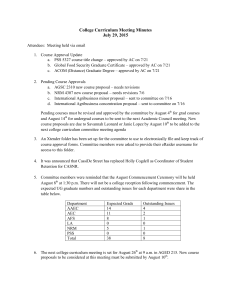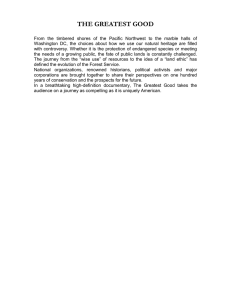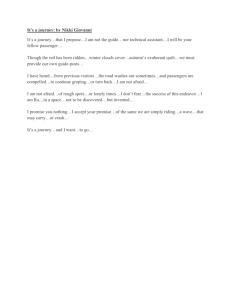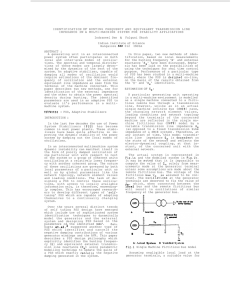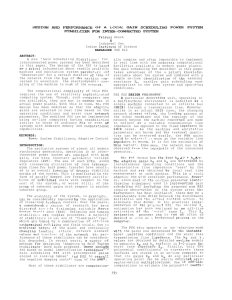A visual tool to create common ground for service design rationale
advertisement
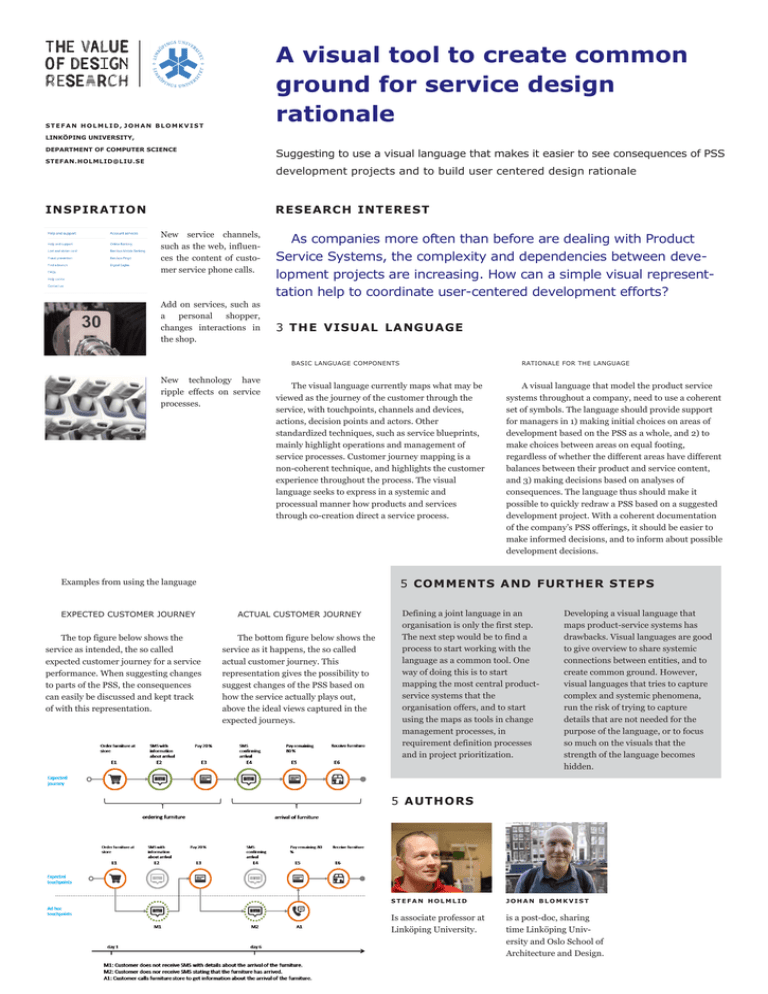
A visual tool to create common ground for service design rationale YOUR UNIVERSITY LOGO TYP E HERE STEFAN HOLMLID, JOHAN BLOMKVIST LINKÖPING UNIVERSITY, DEPARTMENT OF COMPUTER SCIENCE Suggesting to use a visual language that makes it easier to see consequences of PSS STEFAN.HOLMLID@LIU.SE development projects and to build user centered design rationale INSPIRATION RESEARC H INTEREST New service channels, such as the web, influences the content of customer service phone calls. Add on services, such as a personal shopper, changes interactions in the shop. As companies more often than before are dealing with Product Service Systems, the complexity and dependencies between development projects are increasing. How can a simple visual representtation help to coordinate user-centered development efforts? 3 THE VISUAL LANGUAGE BASIC LANGUAGE COMPONENTS New technology have ripple effects on service processes. The visual language currently maps what may be viewed as the journey of the customer through the service, with touchpoints, channels and devices, actions, decision points and actors. Other standardized techniques, such as service blueprints, mainly highlight operations and management of service processes. Customer journey mapping is a non-coherent technique, and highlights the customer experience throughout the process. The visual language seeks to express in a systemic and processual manner how products and services through co-creation direct a service process. The top figure below shows the service as intended, the so called expected customer journey for a service performance. When suggesting changes to parts of the PSS, the consequences can easily be discussed and kept track of with this representation. A visual language that model the product service systems throughout a company, need to use a coherent set of symbols. The language should provide support for managers in 1) making initial choices on areas of development based on the PSS as a whole, and 2) to make choices between areas on equal footing, regardless of whether the different areas have different balances between their product and service content, and 3) making decisions based on analyses of consequences. The language thus should make it possible to quickly redraw a PSS based on a suggested development project. With a coherent documentation of the company’s PSS offerings, it should be easier to make informed decisions, and to inform about possible development decisions. 5 COMMENT S AND FURTHER STEPS Examples from using the language EXPECTED CUSTOMER JOURNEY RATIONALE FOR THE LANGUAGE ACTUAL CUSTOMER JOURNEY The bottom figure below shows the service as it happens, the so called actual customer journey. This representation gives the possibility to suggest changes of the PSS based on how the service actually plays out, above the ideal views captured in the expected journeys. Defining a joint language in an organisation is only the first step. The next step would be to find a process to start working with the language as a common tool. One way of doing this is to start mapping the most central productservice systems that the organisation offers, and to start using the maps as tools in change management processes, in requirement definition processes and in project prioritization. Developing a visual language that maps product-service systems has drawbacks. Visual languages are good to give overview to share systemic connections between entities, and to create common ground. However, visual languages that tries to capture complex and systemic phenomena, run the risk of trying to capture details that are not needed for the purpose of the language, or to focus so much on the visuals that the strength of the language becomes hidden. 5 AUTHORS STEFAN HOLMLID JOHAN BLOMKVIST Is associate professor at Linköping University. is a post-doc, sharing time Linköping University and Oslo School of Architecture and Design.
